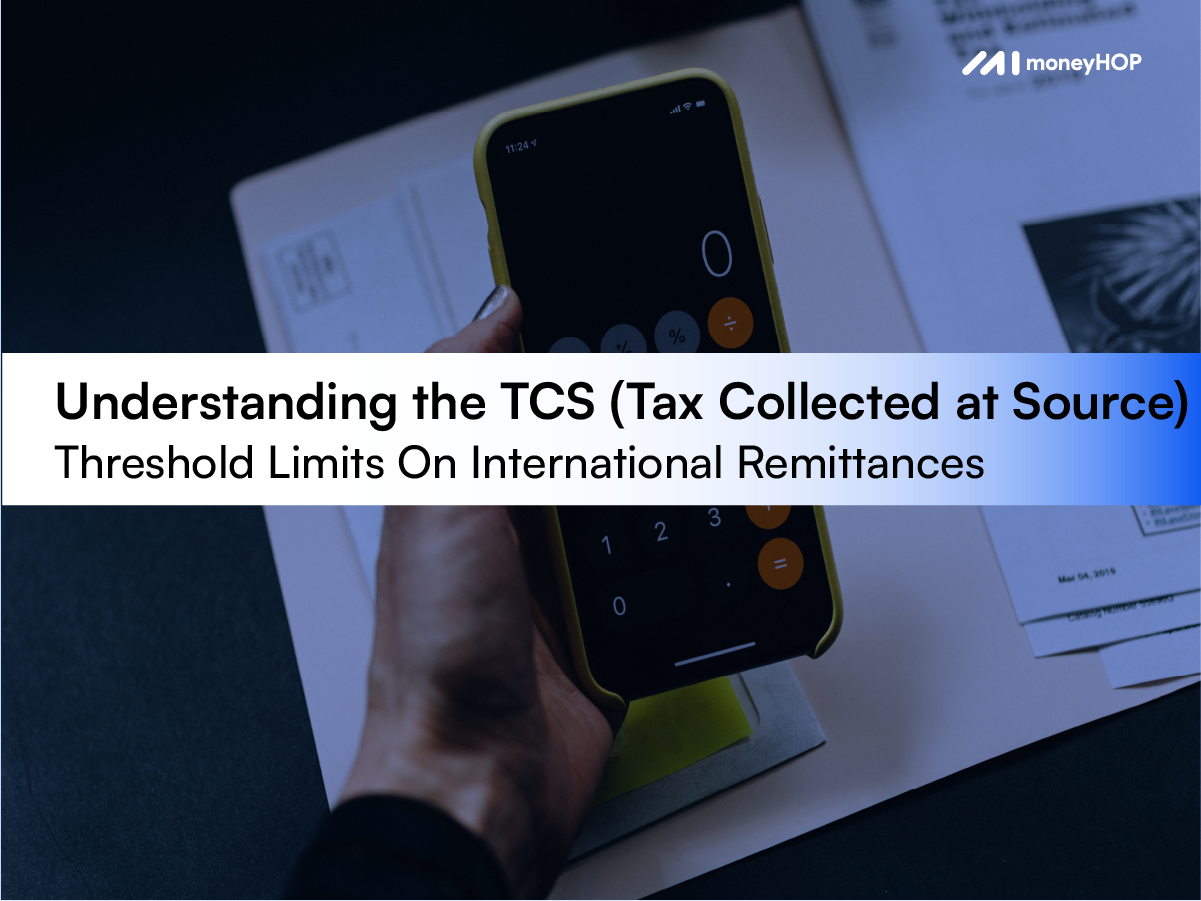What Are TCS Threshold Limits on International Remittances?
If you’re planning to send money abroad in 2025, understanding the TCS threshold limits on international remittances is a must. Think of TCS (Tax Collected at Source) as a guardrail: it ensures large foreign transactions are tracked and taxed appropriately. Under Section 206C of the Income Tax Act, banks, forex companies, and financial institutions collect TCS when facilitating your international money transfers. Knowing these rules is the difference between smooth transactions and unexpected financial surprises.
What’s New: TCS Rates on Foreign Remittances (Effective April 1, 2025)
The government has made it easier for smaller transactions and essential remittances with the new ₹10 lakh threshold. Here’s a quick overview:
| Purpose | Threshold | TCS Rate |
| Education funded by loan | No TCS applicable | 0% |
| Education (self-funded) | > ₹10 lakh | 5% |
| Medical Treatment | > ₹10 lakh | 5% |
| Overseas Tour Packages | Up to ₹10 lakh | 5% |
| Overseas Tour Packages (Above ₹10 lakh) | > ₹10 lakh | 20% |
| Other Purposes (Investment, Gifts, etc.) | > ₹10 lakh | 20% |
- Education loans are completely TCS-free.
- Medical and education self-funding attract just 5% beyond ₹10 lakh.
Mastering the TCS threshold limits on international remittances can save you a substantial amount — why pay extra when you can plan smarter?
Confused about which TCS rate applies to your transfer?
Use this simple guide to find out instantly!

Need to pay your university fees and living expenses abroad?
Make international money transfers easier than ever! Enjoy no paperwork, secure & swift transfers, and real-time tracking.
Real Impacts: Why the New TCS Rules Matter
1. Immediate Cash Outflow
TCS is collected upfront — meaning you need to have extra funds ready at the time of remittance.
2. Filing for Refunds
Though you can claim TCS as a credit when filing your ITR, the cash flow impact cannot be ignored.
Explore More: Refund of TCS on International Remittance – The What & How!
3. Complexity for Frequent Remitters
Regular remitters for education, travel, or gifts must now monitor cumulative amounts more closely than ever.
Mastering the TCS threshold limits on international remittances is not just about compliance — it’s about smart financial management.
Pro Tips to Minimize Your TCS Burden
- Split Your Transfers: If possible, distribute your payments over multiple financial years to stay under ₹10 lakh.
- Fund Through Loans: Use education loans to completely avoid TCS on overseas education payments.
- Smart Travel Bookings: For overseas tours, plan under ₹10 lakh to enjoy lower TCS rates.
- File Early for Refunds: Ensure your Form 26AS reflects collected TCS properly to claim it easily at tax filing time.
Understanding the TCS threshold limits on international remittances and using these hacks can save you real money!
Related Read: How to Avoid 20% TCS on Foreign Remittances
Common Mistakes to Avoid While Managing TCS on International Remittances
Even seasoned travelers and investors can make mistakes when handling TCS obligations. Here are common pitfalls you should avoid:
- Ignoring Cumulative Limits: TCS is applied on the total remittance amount in a financial year, not per transaction. Always track your cumulative transfers.
- Not Using Education Loan Benefits: If eligible, route your education remittance through a recognized education loan to enjoy 0% TCS.
- Overlooking TCS Credit at Tax Filing: Ensure you claim the TCS credit reflected in your Form 26AS while filing your Income Tax Return.
- Thinking TCS is an Extra Tax: TCS is an advance tax, not an additional burden. It’s adjusted against your final income tax liability.
- Choosing High-Markup Providers: High forex markups combined with TCS can burn a hole in your pocket. Choose platforms like HOP Remit by moneyHOP to save more.
Understanding the TCS threshold limits on international remittances and steering clear of these mistakes can optimize your financial planning.
Also Read: Exemptions from TCS on International Money Transfers
Why HOP Remit by moneyHOP is Your Smartest Choice for Foreign Remittances?
Navigating cross-border payments just got trickier — but not if you choose the right partner.
HOP Remit makes your journey stress-free by:
- Offering the lowest forex markups with full transparency.
- Handling TCS compliance and documentation so you don’t have to worry.
- Providing 24×7 human assistance for your remittance queries.
- Helping you maximize savings and minimize hassles.
With HOP Remit, managing your TCS threshold limits on international remittances becomes effortless and efficient.
Why pay more for international money transfers when moneyHOP is here?
- NO hidden fees
- ZERO convenience fees
- Real-time updates
- Lowest exchange rates
In Summary
In 2025, sending money abroad is no longer just about picking the best exchange rate. It’s about planning smarter to navigate TCS rules. Knowing the new TCS threshold limits on international remittances, structuring your transfers wisely, and using compliant platforms like HOP Remit can save you both time and money.
A little attention today can mean thousands saved tomorrow. Don’t let TCS eat into your dreams — transfer smartly, save more, and focus on what truly matters.



Leave a Reply